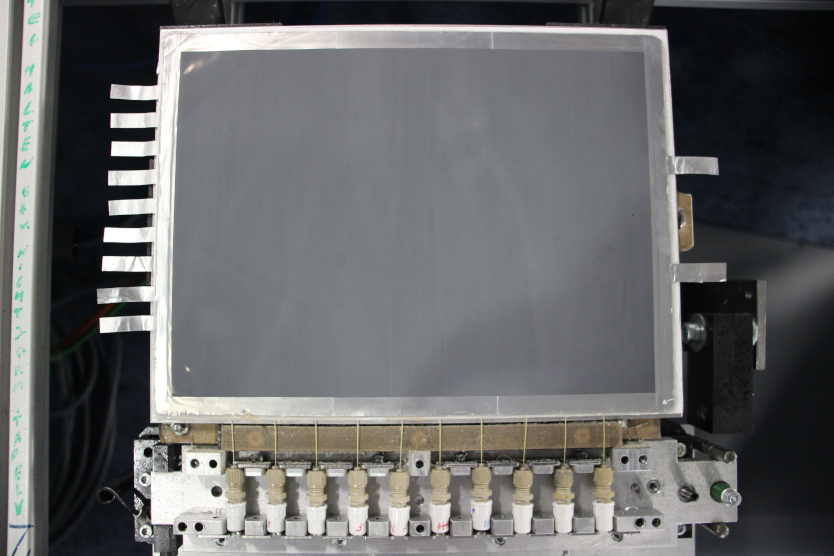
Battery stack in the testing facilities
© thyssenkrupp
Electromobility is an important pillar for a successful energy transition in the field of transport. A central challenge in the expansion of e-mobility lies in the development of more powerful batteries, produced as cost-efficiently as possible. Various models with different chemical compositions have already been developed and optimised for the widespread lithium-ion battery. With the financial support of the BMWi, four project partners are now pursuing an innovative approach with bipolar batteries. These are lithium-ion batteries in which the active materials for the cathode and the anode are applied to a common electrode carrier. It is no longer the individual cells, but the entire stack of electrodes that are enclosed in an aluminium housing. This results in material and cost savings as well as substantial space savings when installed in electric vehicles.
By directly connecting the cells in the stack, the current flows over the entire surface of the battery: bipolar batteries can thus store more energy and increase the range of the electric vehicle. So far, however, such battery modules have only been tested on a laboratory and pilot scale. As part of the EMBATT-goes-FAB project, large-area electrodes are now being used that are integrated into the chassis of an electric vehicle in a stacked design to allow it a range of more than 500 km.
In EMBATT-goes-FAB, the project partners thyssenkrupp System Engineering GmbH, IAV GmbH, Daimler AG and the Fraunhofer Institute for Ceramic Technologies and Systems (IKTS) are not only scaling the assembly technology up to a size of 100 x 30 cm2 but are also developing a special battery management system.
Launched in the summer of 2018, the project will be funded by the BMWi for a period of two years.


